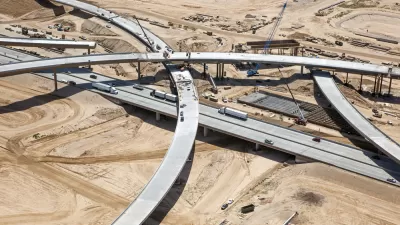Already a common means of delivering infrastructure in many countries, public-private partnerships are growing in importance in the United States, but how do they compare to other procurement models?

Outside of specialist circles, however, most people know little about public-private partnerships (P3s). This month, Doggerel features a series of conversations with members of our advisory team exploring the basic concepts behind P3s. In this third installment, Arup transaction advice specialists Alfonso Mendez, Roberto Sierra, and Jorge Valenzuela discuss how P3s compare to other project delivery models.
Can you give an overview of the differences between P3s and other common models?
Mendez: In the US, most infrastructure projects use design-build (DB) or design-bid-build (DBB) delivery methods, where you basically hire somebody to build a project for you and then they hand it back to you when it’s completed. In both cases the owner makes periodic progress payments, typically monthly.
With a P3, on the other hand, the company designs and builds the project, but they’re also in charge of financing it, keeping it up, and operating it for the next 30 to 40 years, until they give it back to the owner on the date specified in the contract and under certain conditions. That means all the additional capital investments that are required during that time will be in their court. The owner will only make payments, if any were agreed to in the contract, upon project completion. If it’s a revenue-generating P3 deal, such as a toll road, the private investment is instead paid back by the project’s revenues.
FULL STORY: P3 101: Comparing infrastructure procurement models

Maui's Vacation Rental Debate Turns Ugly
Verbal attacks, misinformation campaigns and fistfights plague a high-stakes debate to convert thousands of vacation rentals into long-term housing.

Planetizen Federal Action Tracker
A weekly monitor of how Trump’s orders and actions are impacting planners and planning in America.

San Francisco Suspends Traffic Calming Amidst Record Deaths
Citing “a challenging fiscal landscape,” the city will cease the program on the heels of 42 traffic deaths, including 24 pedestrians.

Defunct Pittsburgh Power Plant to Become Residential Tower
A decommissioned steam heat plant will be redeveloped into almost 100 affordable housing units.

Trump Prompts Restructuring of Transportation Research Board in “Unprecedented Overreach”
The TRB has eliminated more than half of its committees including those focused on climate, equity, and cities.

Amtrak Rolls Out New Orleans to Alabama “Mardi Gras” Train
The new service will operate morning and evening departures between Mobile and New Orleans.
Urban Design for Planners 1: Software Tools
This six-course series explores essential urban design concepts using open source software and equips planners with the tools they need to participate fully in the urban design process.
Planning for Universal Design
Learn the tools for implementing Universal Design in planning regulations.
Heyer Gruel & Associates PA
JM Goldson LLC
Custer County Colorado
City of Camden Redevelopment Agency
City of Astoria
Transportation Research & Education Center (TREC) at Portland State University
Jefferson Parish Government
Camden Redevelopment Agency
City of Claremont




























